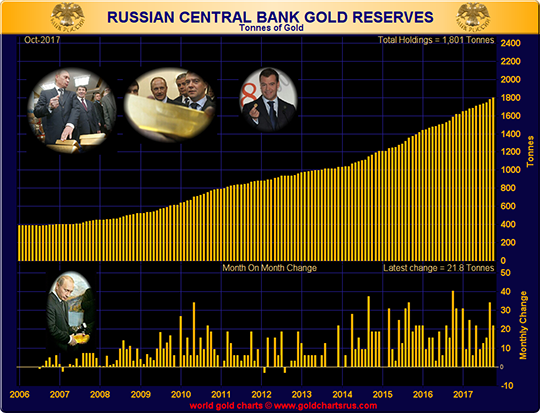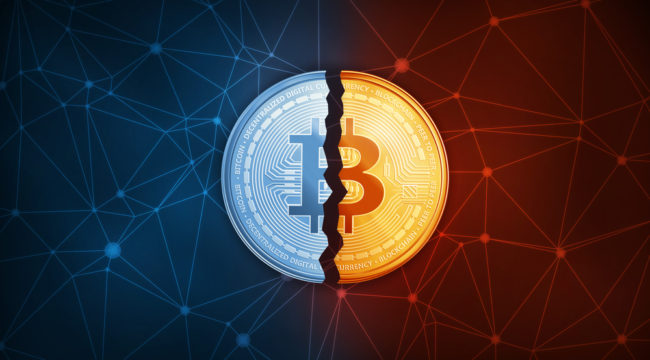Russia’s Plans for a “Fire Escape” Currency
It may be a new year, but Russia makes no secret of its long-term dissatisfaction with U.S. politics, the dollar and, by extension, U.S. monetary hegemony in the world.
Russia has been under U.S./Western economic sanctions for over three years. Meanwhile, oil prices have been “lower for longer,” as the saying goes, due to global competition for market share from U.S. fracking. The overall impact of these phenomena has been costly to the Russian economy.
Still, Russia has persevered through all manner of external economic roadblocks. The Russian view is sanguine, and that, as time passes, the dollar is in trouble, for a lengthy list of reasons.
Indeed, Russia’s strategic intent is clear…
To escape the constraints and political risks of a dollar-denominated world. In fact, Russian leaders are forming a new currency arrangement that will allow them to do exactly that.
My partner Jim Rickards and I call this new phenomenon Russia’s “fire escape” currency. It’s coming down the line, and smart investors can profit from it.
First though, you need to understand the Russian view of the dollar.
At the highest levels of Russian governance, officials are deeply concerned with what they perceive as U.S. political meddling and bullying, based on the dollar.
Western economic sanctions are part of this. The U.S. and Western partners have blocked all manner of trade in goods and services with Russia, and extended the blockage to many Russian export items as well.
Plus, Russia chafes under restrictions on transferring funds via the international SWIFT system (Society for Worldwide Interbank Financial Telecommunication). There are many other issues related to the dollar, as well. Far too many to list here.
But, it’s fair to say that Russian policymakers hold profound distrust and resentment towards how the U.S. has, in their view, abused the status of the dollar as the predominant international reserve currency.
As far back as 2011, at a major conference in Russia, Vladimir Putin said, “They (USA) are living beyond their means and shifting a part of the weight of their problems to the world economy… They (USA) are living like parasites off the global economy and their monopoly of the dollar.”
Unsurprisingly, since 2011, Russia has pushed back against dollar-hegemony. Among other things, Russia has accumulated a large amount of gold.
In fact, in the past six years, Russia has more than doubled its official, publicly-acknowledged, state holdings of gold, as this chart makes clear.

Source: BullionStar
Russia has broadcast news of this gold buildup to the entire world. Russian policymakers want people to know about the gold stash.
For example, according to a recent article in Russia’s Sputnik News, Russia’s monetary policy has the Kremlin’s central bank “Stacking Bullion Bricks Like There Is No Tomorrow.”
Many Russians regard those gold bricks as a “strategic reserve” for the country. That’s because Russian culture is imbued with a deep-seated military viewpoint, formed over many centuries of warfare between that nation and its external enemies and invaders.
So, Russians see physical gold as a critical substance, held back and out of normal usage, in case of need during an emergency.
Dmitri Tulin, the Gold Manager of Russia’s Central Bank recently commented that “The price of (gold) swings, but on the other hand it is a 100% guarantee from legal and political risks.”
In other words, Russia views holding gold as part of its national defense system, in that gold works to mitigate against “political risks.”
Meanwhile, a leading Russian thinker, Valentin Katasonov has weighed-in on the subject of state-owned gold. He’s a senior faculty member at the Moscow State Institute of International Relations, Russia’s equivalent of Yale or Stanford in terms of prestige, and alma mater of current Russian Foreign Minister Sergei Lavrov.
According to Katasonov, Russia’s central bank is “doing the right thing. … The (current) price of the precious metal is undervalued, and significantly so. … Investors looking for long-term results are investing in gold.”
Recently, and in a remarkable — but not unexpected — announcement, First Deputy Chairman of Russia’s Central Bank, Sergey Shvetsov announced that BRICS nations (Brazil, Russia, India, China and South Africa), are now working to create a unified system of gold trade.
In essence, this new gold-trade system will become a parallel, globe-spanning monetary system, in competition with the current, dollar-based regime. The new, gold-based system would operate “both within BRICS and at the level of bilateral contacts,” according to Shvetsov.
“The traditional [trade] system based in London and partially in Swiss cities is becoming less relevant as new trade hubs are emerging, first of all in India, China, and South Africa,” he said.
This new BRICS gold system would be impactful, to say the least.
BRICS member states represent almost three billion people, and about 20% of global GDP. The idea has instant credibility, because Russia and China are two of the world’s top gold producers, with South Africa high in the rankings as well. Meanwhile, Brazil is a mining nation, and rich in other basic resources like oil; while India has an ancient cultural affinity for yellow metal.
Clearly, with Russia in the lead, BRICS nations are planning for a future time and/or event when the dollar fades in power and influence. They’re setting up a parallel currency system. It’s a “fire escape” currency, so to speak.
Considering that BRICS members are all either large producers or consumers of gold, or both, it’s more than likely that the looming gold-trade system will be based on physical metal. That means that it would be based on either transferring quantities of physical gold, or a closely-monitored accounting system that tracks gold-ownership interests.
It’s important to focus on how the new BRICS gold system will rest on actual metal, unlike the current situation with London gold-trading, and on the Comex. With the latter, gold-trading and gold-price discovery are based almost entirely on buying and selling large quantities of synthetic derivatives on gold. These are completely detached from the physical gold market. In other words, much of the so-called “gold trade” is currently just an electronic shell game.
Looking ahead, Jim and anticipate that this new BRICS, “fire escape” gold currency system will almost surely upend gold pricing across the world, leading to much higher valuations for yellow metal.
Thus, for your protection and to preserve your wealth over time, you must own gold, and do so in a variety of ways.
First, you should definitely own some amount of physical metal in your possession; not a “gold certificate” for metal in a vault, far away. Jim and I say 5–10% of your portfolio, or more if it makes you sleep better at night.
Second, there are several excellent forms of gold investments we recommend in Rickards’ Gold Speculator.
Specifically, we recommend a number of gold mining stocks that can dramatically outperform physical gold itself. These stocks are the royal road to golden riches when the price of gold really takes off. And we’re at the beginning of a new bull market in gold, as Jim has recently demonstrated.
Now’s the time to jump in.
Regards,



Comments: